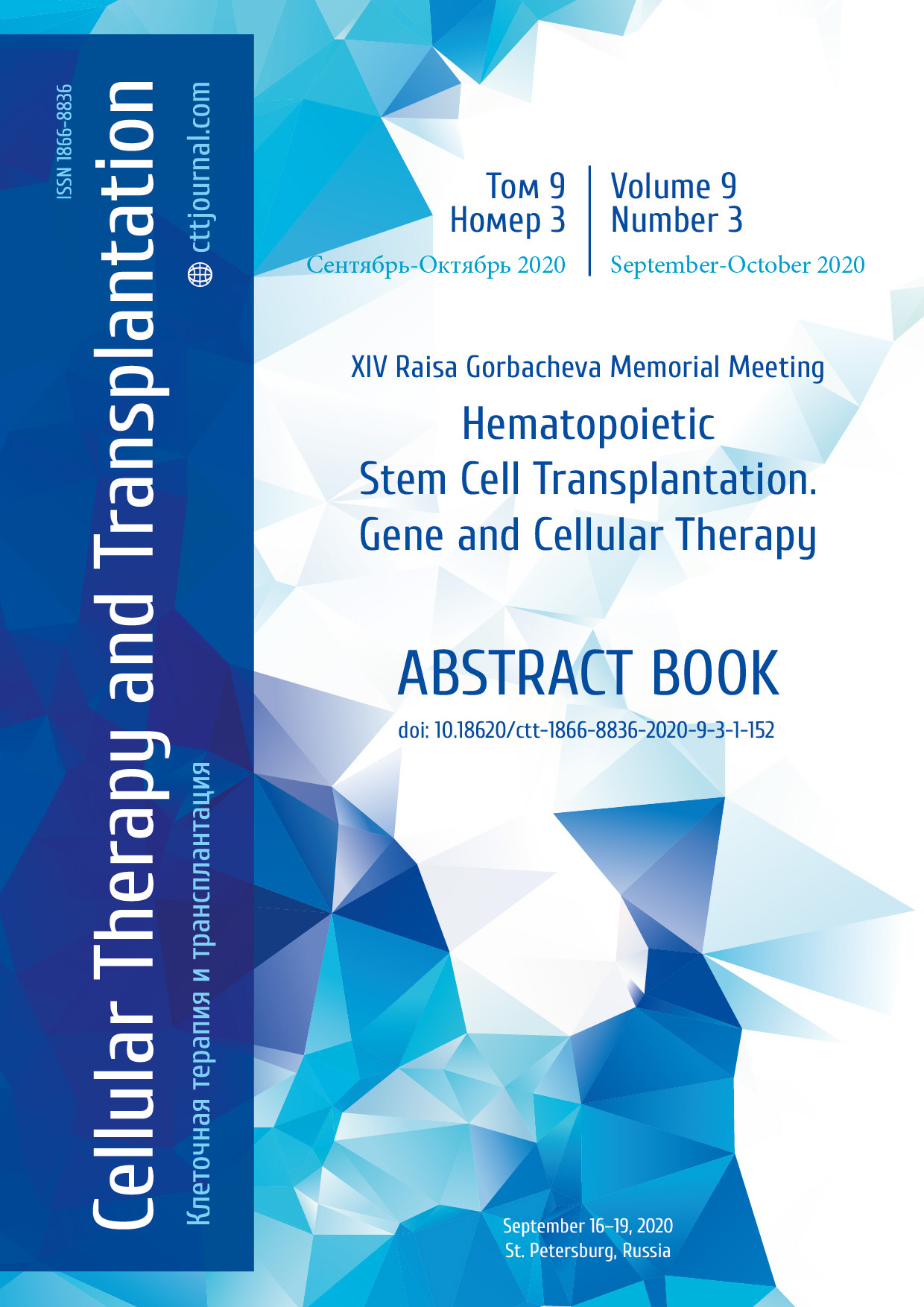IC-09. Risk factors for the anti-HLA antibodies development in allogeneic hematopoetic stem cell transplant recipients
Olga S. Starikova, Julia O. Davydova, Mikhail Yu. Drokov, Vera A. Vasilieva, Ekaterina D. Mikhaltsova, Natalia N. Popova, Daria S. Dubnyak, Anna A. Dmitrova, Olga M. Koroleva, Natalia M. Nikiforova, Zoya V. Konova, Mobil I. Akhmedov, Maria V. Dovydenko, Ulyana V. Maslikova, Feruza A. Omarova, Elmira I. Kolgaeva, Nikolay M. Kapranov, Larisa A. Kuzmina, Irina V. Galtseva, Elena N. Parovichnikova, Valery G. Savchenko
National Research Center for Hematology, Moscow, Russia
Contact: Dr. Olga S. Starikova, e-mail: olga.starikova.1994@mail.ru
Summary
Introduction
Donor-specific anti-HLA antibodies are associated with higher risk of graft failure after transplantation of allogeneic hematopoietic stem cells (allo-HSCT). According to the literature, risk factors for the anti-HLA antibodies development are: female gender (probably due to the stimulation of the mother’s immune system with fetal antigens during pregnancy), previous multiple transfusions, and a history of solid organ/bone marrow transplantation. Our objective was to investigate the impact of possible risk factors on development of the anti-HLA antibodies in potential allogeneic hematopoietic stem cell transplant recipients.
Materials and methods
The study included 37 patients (15 male, 22 female) with hematological malignancies: 18, with acute lymphoblastic leukemia, 16, with acute myeloid leukemia, 1, with chronic myeloid leukemia, and 2 patients with myelodysplastic syndrome. The median of age was 33 years (range 20 to 55). The median term from the date of diagnosis till the date of BMT was 9.3 months (range 3.9 to 65.6). Based on this parameter, we indirectly assessed the transfusion history and duration of previous treatment. Among females, 5 had no pregnancies; the remaining women had a median history of 3 pregnancies (from 1 to 7). Only one patient had a previous transplantation (2 allo-HSCTs). Serum samples were taken from all patients during examination before allo-HSCT and subsequently were stored in the local biobank.
The search for antibodies to HLA class I and II antigens was performed by flow cytometry (CytoFLEX (Beckman Coulter), CytExpert software) in serum samples using FlowPRA Screening Test reagents for screening anti-HLA antibodies (a pool of 30 types of microparticles coated with various HLA class I or II antigens) (One Lambda). Patient serum was incubated with FlowPRA particles and stained with fluorescently labeled anti-human IgG. The variables were analyzed using Chi-square test and Fisher’s exact test. A p-value <0.05 was considered statistically significant. Data analysis was performed using SPSS ver. 23 (IBM, Chicago, IL, USA).
Results and discussion
Anti-HLA antibodies were detected in the serum of seven patients: to HLA I class, (four cases) -; to HLA II class (one case) -; to the both, in two cases. The probability of detecting anti-HLA antibodies was significantly higher in females compared to males 31.8% vs 0% (p=0.017), with the odds Ratio = 2 (95% CI, 1.39-2.86). In a subgroup analysis, two or more previous pregnancies were significantly associated with a higher risk of detecting anti-HLA antibodies compared to the patients with one or no pregnancies (46.7% and 0%, p=0.038).The odds ratio (Odds Ratio) = 1.87 (95% CI, 1.16-3.01). No relationship was found between the diagnosis, time to allo-HSCT and the probability of anti-HLA antibody detection.
Conclusion
In this work, we were able to demonstrate the influence of female gender and multiple pregnancies on the probability of detecting anti-HLA antibodies prior to allo-HSCT. Potential allo-HSCT recipients with high-risk factors (multiparous females) should be carefully followed-up for the presence of anti-HLA antibodies, particularly in cases of mismatched or haploidentical transplantations.
Keywords
Anti-HLA antibodies, graft failure.


